Leaderboard
Popular Content
Showing content with the highest reputation on 12/14/2015 in all areas
-
Due to it's "grows like crazy" tendency I've had to prune back my M. geometrizans and now have a few meters of stems laying about. I only "need" one large plant and don't graft or grow from seeds so these bits are totally useless to me and will end up binned if there's no taker. Unfortunately with the nature of these bits (Australia Post would likely ban me from ever shipping anything again!) there's just no way I can ship anywhere so the happy recipient would have to pick them up in person from Sydney's west...St Clair to be more precise. Leftover bits freshly cut, a tad skinny at the moment due to lack of rain. First come/first serve!10 points
-
6 points
-
Sorry for the late progress my family has had a few problems .So i have been stuck out on the farm .As soon as I get back to Brisbane I will post out the lovely necter .Sorry to all those who have been waiting .Should be back in a week Thanks Bigred5 points
-
dcliw a nurse you get along with leaves your medicine draw unlocked n winks at you so you can have your diazipam and tem tabs whenever you feel like it. nice.4 points
-
Here's a few I didn't attatch Where I start my seeds/cuttings and keep my warrior pets A. asterias on a zygo pad Grafted loph "blind" growth (is that even a real term?) How do people keep their dragon fruit? Mine weren't having a good time in the sun so now they just get 3hrs a day. Will this be better than full sun? Good to hear from you Horus, I might even come that way after Xmas to see the other newie crew so will stop by and say g'day if I do! You make sure to do the same if your ever down south mate. Cheers Brendo, it'll be bonkas when it's grown in. Tbh I've been fluffin about removing plants and changing em too often. I'm happy now with the selection and will let it go crazy on its own! Thanks to everyone else also4 points
-
Hi guys, here are some new updates for my seed list. All seeds mentioned here are available. I love trading but can also sell some of them if you want! Needless to say that all those types were harvested from culture plants and NOT illegally taken from the wild. If you are interested in anything, let me know. I am located in Europe, which is why this posting needs a disclaimer that not all seeds can be sent to Australia. Most Trichocereus types are not a problem and if you are interested in anything else, let me know and I´ll have a look at the AQUIS list. Enough talking, check out my list! Trichocereus Pachanoi / Peruvianus Intermediate (pic 1) This is one of the most badass Pachanoi types on the market. But it can also be very spiny and is somewhere between Pachanoi and Peruvianus. Viability is great and tested. Trichocereus pachanoi x Tr. peruvianus Trichocereus tunariensis (Cochabamba) Trichocereus tarapacana / Soehrensia taracapana Trichocereus bridgesii type from the Rio Abajo / La Paz in Bolivia Trichocereus puquiensis from Puquio. I do not know much about this type yet. What I do know is that this is probably a five ribbed version from Puquio that´s somewhere between Tr. cuzcoensis and Tr. peruvianus. . Trichocereus poco / Trichocereus Tarijensis Trichocereus tacaquirensis (Tacaquiri, Bolivia) Trichocereus narvaezensis (no real info on this one yet) Trichocereus taquimbalensis (Lecori, Bolivia And the rest of my seed list: Trichocereus Bridgesii Australian Hybrid Seed Trichocereus Cordobensis (almost sold out now). Trichocereus Peruvianus Matucana Trichocereus Peruvianus - Rio Lurin Trichocereus Peruvianus or Cuzcoensis Huancavelica Trichocereus Tarmaensis Trichocereus Knuthianus from North Peru Trichocereus Andalgalensis x Tr. Grandiflorus Crassicaulis Trichocereus Mix Trichocereus Spachianus Stetsonia Coryne Matucana Madisonorium Lophocereus Schottii Trichocereus Camarguensis KK1414 Armatocereus Matucanensis Melocactus Peruvianus Azureocereus Hertlingianus Neoraimondia Roseiflora Oroya Borchersii Arequipa sp. Espostoa nana Haageocereus Acranthus Backeberg Loxanthocereus Hoffmannii var. Seniloides Tephrocactus floccosus Loxanthocereus Pullatus Rauh & Backeberg Echinocactus grusonii3 points
-
I took my camera around today while enjoying a lovely bevvo, here are some pics to share. I haven't been real active in here or at camps lately. But I'm still alive, growing plants, battling thru the same shit as everyone! Peace and enjoy the beer Ps - sorry can't stop em rotating Rosie open Mixed bunch Psychotria nexus, catha and viridis 4-5ft tall each My Hoya collection A small cactus mound I made3 points
-
hey you all anybody out there have any info on this plant? from what i can ascertain it was chewed by the locals in the western cape as a thirst quencher and stimulant, but so far can get no first hand info from anyone, did manage to get 4 seed which germinated, and 13 seedlings from under a tree, did taste the mature soft leaves and there is definitely an alkaloid in there, more bitter than catha even on unpruned trees, will post a few pics of the big trees next time we up there.3 points
-
Hello all, in the quest to simplify my life and rid myself of excess possessions here is the last of my book collection for sale. The price I'm asking is the price I paid for them, if something is unreasonable or cheaper by far elsewhere pm me and we can work something out. All books in great condition with no tears etc. Noam Chomsky - how the world works $15 Torrance McKenna - food of the gods $15 the psychedelic journey of marlene dobkin - $20 Martin ball - mushroom wisdom - SOLD Julian palmer - articulations - SOLD Wanda Sellar - The directory of essential oils - SOLD The encyclopaedia of natural medicine - $20 The mushroom cultivator - $50 Water plants in Australia field guide - $15 Psilocybin mushrooms of the world - $40 Buyer pays postage, will be sent on a Monday or Tuesday. Taking expressions of interest for mint condition garden of Eden hard cover also. Pm me offers, they'll need to be good tho to get me to part with it3 points
-
3 points
-
It's good see some interest in the B group vitamins and their association with neurotransmitters Hoffer and Osmond did a lot of research into this field decades ago. They found they could often return many schizophrenic patients to a normal state through the use of niacin. The condition is commonly reported in cases of pellagra. Other symptoms in patients with pellagra or sub clinical pellagra are tension,depression, fatigue, personality problems, withdrawal from life and perceptual changes etc. I haven't looked into it for ages, but I remember many of the pellagra patients were found to be lacking in an enzyme that converts niacin into NADP and without the conversion the niacin can't do its job and can even become toxic. Research into psychedelics in the sixties and seventies turned up some interesting stuff in relation to nicotinamide adenine dineucleotide enzymes and the regulation of the adrenal system. The absence of NAD causes adrenaline levels to build up. I think they discovered it by investigating the amine oxidase pathways under the influence of mescaline. Schizophrenic patients often test positive to adrenochrome on a urine test. Adrenochrome is similar to adrenaline and mescaline and injecting into a healthy patient can trigger a bout of schizophrenia or other anxiety related issues.3 points
-
3 points
-
Keen on tulhuayacensis seeds as well. My tulhuaya X bridgesii seedlings from SS are coming along nicely, one already has a basal pup so maybe a few years and will be able to see a flower for color check.2 points
-
and a recent photo of someone who might be his daughter, after collecting some seeds /personal archive /:2 points
-
2 points
-
2 points
-
2 points
-
I know fuck all about Australia Post but I do know that xmas time is pretty bloody busy at post offices. Hopefully all the missing letters are just mixed up with the shitloads of christmas cards and stuff also getting delivered right now and will turn up in time for a nice xmas surprise. As for my seeds, got pretty much 100% germination except for lumberjackus x TPM which is taking a lil longer but getting there nonetheless. Thanks again Nitro!!!!!!!!!!!!!! Much praise to our God of the Freaks!!!2 points
-
So I'm pretty sure my package has gone awol. to customs...... Big thankyou and much respect to Nitrogen for his awesome giveaway regardless. So, if anybody who received there seeds is feeling awesome. I would absolutely love some seeds of crosses 3, 4 and 5 please! Have seeds or seedlings to trade. Have nitrogen's other crosses from zelly for trade too.....2 points
-
Even though I now feel socially included thanks to the support of friends and this community, I've for a long time struggled with feelings of social subordination and defeat. Here's a recent article that has intrigued me. Maybe nicotinamide is a good direction for targeting anxiety that arises from such feelings? Anyone played around with it as an anxiolytic? I'm aware there are a few reports on the internet regarding use for anxiety but I'd like to hear from members here Mitochondrial function in the brain links anxiety with social subordination Dominance hierarchies are integral aspects of social groups, yet whether personality traits may predispose individuals to a particular rank remains unclear. Here we show that trait anxiety directly influences social dominance in male outbred rats and identify an important mediating role for mitochondrial function in the nucleus accumbens. High-anxious animals that are prone to become subordinate during a social encounter with a low-anxious rat exhibit reduced mitochondrial complex I and II proteins and respiratory capacity as well as decreased ATP and increased ROS production in the nucleus accumbens. A causal link for these findings is indicated by pharmacological approaches. In a dyadic contest between anxiety-matched animals, microinfusion of specific mitochondrial complex I or II inhibitors into the nucleus accumbens reduced social rank, mimicking the low probability to become dominant observed in high-anxious animals. Conversely, intraaccumbal infusion of nicotinamide, an amide form of vitamin B3 known to enhance brain energy metabolism, prevented the development of a subordinate status in high-anxious individuals. We conclude that mitochondrial function in the nucleus accumbens is crucial for social hierarchy establishment and is critically involved in the low social competitiveness associated with high anxiety. Our findings highlight a key role for brain energy metabolism in social behavior and point to mitochondrial function in the nucleus accumbens as a potential marker and avenue of treatment for anxiety-related social disorders.2 points
-
https://en.wikipedia.org/wiki/Homo_sapiens https://en.wikipedia.org/wiki/Human https://en.wikipedia.org/wiki/Neanderthal https://en.wikipedia.org/wiki/Homo_rhodesiensis https://en.wikipedia.org/wiki/Australopithecine https://en.wikipedia.org/wiki/Homo_sapiens_idaltu https://en.wikipedia.org/wiki/Miocene food for thought... anyone thrilled by scientific progress in this field?1 point
-
Here's a recent article: Consumption of anthocyanin-rich cherry juice for 12 weeks improves memory and cognition in older adults with mild-to-moderate dementia. PURPOSE:Dietary flavonoids, including anthocyanins, may positively influence cognition and may be beneficial for the prevention and treatment of dementia. We aimed to assess whether daily consumption of anthocyanin-rich cherry juice changed cognitive function in older adults with dementia. Blood pressure and anti-inflammatory effects were examined as secondary outcomes. METHODS:A 12-week randomised controlled trial assessed cognitive outcomes in older adults (+70 year) with mild-to-moderate dementia (n = 49) after consumption of 200 ml/day of either a cherry juice or a control juice with negligible anthocyanin content. Blood pressure and inflammatory markers (CRP and IL-6) were measured at 6 and 12 weeks. ANCOVA controlling for baseline and RMANOVA assessed change in cognition and blood pressure. RESULTS:Improvements in verbal fluency (p = 0.014), short-term memory (p = 0.014) and long-term memory (p ≤ 0.001) were found in the cherry juice group. A significant reduction in systolic (p = 0.038) blood pressure and a trend for diastolic (p = 0.160) blood pressure reduction was evident in the intervention group. Markers of inflammation (CRP and IL-6) were not altered. CONCLUSION:Inclusion of an anthocyanin-rich beverage may be a practical and feasible way to improve total anthocyanin consumption in older adults with mild-to-moderate dementia, with potential to improve specific cognitive outcomes. For more on cognitive benefits: Berry Anthocyanins (Blackcurrant, Blueberry, Cherry, Cranberry, Grape) "As shown in Table 2, berries contain a range of different flavonoid subclasses, but they are typically richest in anthocyanins. Initial berry studies predominantly investigated the cognitive effects of whole fruit. For example, Dodd [25] demonstrated improved accuracy on a letter memory task (measuring working memory) following freeze dried whole blueberries (200 g fresh equivalent, 631 mg anthocyanidins), in 19 young adults at a postprandial time point of 5 h (d = 0.57). The study employed a double blind, crossover design with an energy matched control condition. No effects were observed at an earlier time of 2 h or for other measures of executive function, memory, or mood. For a subset of participants, blood samples taken 1 h postprandially revealed a trend towards increased plasma levels of brain-derived neurotrophic factor (BDNF) in the blueberry condition. Unfortunately, cognition was not measured at this time point so it is impossible to say whether the neurochemical changes are related to the cognitive outcome. In the same study, older adults’ BDNF values decreased from baseline for both blueberry and placebo conditions, but the decrease at the 1 h time point was attenuated in the blueberry condition. These older adults (n = 18) showed improved performance on an immediate word recognition task at both 2 h (d = 0.44) and 5 h (d = 0.69) postprandially, but no improvements in executive function or mood were observed. A later study by Whyte and Williams [26], using fresh whole blueberries (200 g, 143 mg anthocyanins), investigated cognitive effects in children. They found no effects at 2 h for a range of executive function tasks, but did observe a significant improvement in delayed word recall using the Rey auditory verbal learning task (RAVLT) (d = 0.74). This was a small, crossover study with only 14 participants. As no baseline measures were taken, variations in performance across test days may have reduced the statistical power. Nevertheless, the medium effect size for the RAVLT provides good evidence for positive effects of blueberry flavonoids in children. Whyte, Schafer and Williams [27] conducted a larger (n = 21) double-blind, placebo-controlled, crossover study investigating the cognitive effects of 2 separate blueberry doses (127 mg and 253 mg anthocyanins), again in children. The highest dose resulted in significant improvements in immediate word recall after 1.25 h (d = 0.80), and in delayed word recognition after 6 h (d = 0.78). Improved accuracy was observed during a flanker interference task after 3 h, although only for cognitively demanding incongruent trials (d = 0.78). However, reaction times for a Go-NoGo measure of inhibition revealed significantly faster performance following the placebo compared with the blueberry interventions. The positive blueberry effects in older adults and children appear to be focussed on episodic memory, whereas improvements in executive function are more consistent in young adults. The differences in cognitive domains may be an artefact of the small sample sizes, but could also be indicative of age differences in the capacity for improvement in underlying neuronal structures. For example, hippocampal function may be more receptive during development in childhood and decline in old age, whilst frontal regions associated with executive function may be more sensitive in young adulthood. It is noteworthy that neurochemical changes in BDNF were apparent after 1 h, yet distinct time points for memory effects emerged at 1.25–2 h and 5 h, but not at an intervening 3 h time point. At this stage only BDNF trends have been observed, and not directly in association with cognitive changes. Although it is perhaps premature to comment on the relationship between acute changes in cognition and BDNF, it has nevertheless been posited that flavonoid induced increases in BDNF may facilitate stronger memory encoding [27]. Possible mechanisms of action are discussed below. Overall, the timings of cognitive effects are likely to be related to the digestion, absorption and metabolism of flavonoids, but further mapping of cognitive and physiological observations is required in order to resolve inconsistencies within the current observations. The flavonoid content of blueberries is known to vary widely depending on growing, processing and storage conditions [28,29]. The same 200 g quantity of whole blueberries used in the first two studies [25,26] described above showed extreme differences in flavonoid content (631 mg anthocyanidins and 143 mg anthocyanins respectively). This highlights the importance of analysing fresh fruits for their flavonoid content when conducting an intervention. It is also important to note that compositional analysis of anthocyanins typically (but not exclusively) involves the removal of saccharide conjugates prior to quantification; therefore anthocyanin content is often reported as anthocyanidin equivalent. This difference is critical when comparing doses between studies. For example, a berry intervention reported to contain 100 mg cyanidin may actually contain 156 mg chrysanthemin (a saccharide of cyanidin). Some studies reviewed here appear to use the terms anthocyanins and anthocyanidins interchangeably without acknowledging this distinction, making it unclear whether a reported anthocyanin dose is actually referring to an equivalent anthocyanidin dose. Similarly to blueberries, blackcurrants are a rich source of anthocyanins. Watson et al. [30] conducted a double-blind, controlled crossover trial of two blackcurrant extracts (cold-pressed juice or freeze-dried powder). Improved attention compared with an energy-matched control was observed in 36 young adults during a 70-min-long, cognitively fatiguing battery, beginning 1 h postprandially. Specifically, declining accuracy on a rapid visual information processing (RVIP) task was attenuated after taking the powdered extract (d = 0.10, d = 0.47, d = 0.47, d = 0.49, d = 0.49, d = 0.59, d = 0.56, measured for 7 task repetitions; once every 10 min). Similarly, a slowing of reaction time on a digit vigilance task following both blackcurrant and placebo interventions was attenuated after taking the juiced extract (d = 0.60, d = 0.73 and d = 0.60 for the 1st, 4th and 7th repetitions of the task, respectively). No effects were observed for the Stroop test (a measure of inhibition and attention), or for subjective measures of mood and mental fatigue. The total polyphenol content of the two extracts were matched at 525 mg/60 kg bodyweight. However, the anthocyanin content differed slightly; 483 mg/60 kg bodyweight for the powder and 467 mg/60 kg for the juice. This difference was also reflected in the analysis of plasma anthocyanin levels, which were observed to be higher following consumption of the powdered extract compared with the juice. Interestingly, the juice but not the powder was observed to inhibit platelet monoamine oxidase (MAO) and to attenuate blood glucose decline over the duration of the 70-min task battery. This study suggests that the way an extract is prepared may influence cognitive and physiological outcomes, however as different blackcurrant cultivars were used for each extract, the contrasting observations may simply represent compositional differences such as the ratio of flavonoid subclasses present. For the juiced blackcurrant extract, MAO inhibition and blood glucose regulation emerge as possible mechanisms of action further to the neurochemical changes observed for blueberries. The significant cognitive effects were observed for tests of executive function (RVIP and to some extent vigilance) which is consistent with the executive function benefits reported in healthy young adults following blueberry anthocyanins. In a double-blind crossover intervention study, Hendrickson and Mattes [31] investigated whether an acute dose of grape juice would mitigate deficits in mood and cognition that commonly occur following a large meal. Approximately 600 mL (10 mL/kg), containing around 580 mg anthocyanins, was administered to young adult smokers along with a standardised lunch. Smokers were selected on the rationale that this population have an increased propensity to oxidative stress, and because smoking abstinence can exaggerate the post-meal dip in cognitive or affective state, thus this population may be more sensitive to the effects of flavonoids than healthy non-smokers. This was a large study (n = 35) with considerable statistical power, yet no significant effects of grape juice were observed 1 h postprandially when compared to an energy matched placebo condition. Mood ratings for positive mood states (pleasure, arousal and vigor) were observed to decline under both grape and placebo conditions, similarly ratings of negative mood states (confusion and fatigue) increased under both conditions. Although mood generally declined, word fragment completion task performance did not significantly change over time in either condition. It is unfortunate that performance on only one cognitive domain was examined (implicit memory), which is an area that has not previously been considered with respect to flavonoid intervention. Studies may be more likely to observe effects on traditional measures of explicit memory and executive function. Recently, Caldwell et al. [32] published their investigations into the effects of cherry flavonoids. Following administration of 300 mL cherry juice (55 mg anthocyanins) to younger adults (n = 6), older adults (n = 5) and older adults with mild cognitive impairment (n = 5), tests of executive function, speed of processing, and verbal learning and memory were performed at baseline and 6 h postprandially. At 6 h, the older adults displayed improved task switching performance compared to baseline (db = 0.75). No other cognitive effects were observed. The authors attribute this single effect to type 1 error, citing attrition of participants in that group as a likely cause. However the small sample size in all groups suggests that the whole study is likely to be severely underpowered. The lack of an energy matched, low flavonoid control condition is also cause for concern; a second crossover condition only administered the same juice in three separate 100 mL aliquots each consumed 1 h apart. No cognitive effects were observed relative to baseline following consumption of the juice in these consecutive smaller doses. A further problem may be the intervention itself; the anthocyanin content of the cherry juice appears very low compared to some of the above studies. A considerably larger, controlled study is therefore needed to determine if cherry anthocyanins elicit acute cognitive effects similar to those of other anthocyanin-rich fruits." Anthocyanins are an interesting class of dietary polyphenols with many health benefits including targeting metabolic syndrome and obesity [1]: “Polyphenols are family of polar compounds found in fruits and vegetables, they have been popular for their potent antioxidant effect, but in the past 5 years increasing evidence has shown that, anthocyanins, a specific category of polyphenols, are effective in ameliorating obesity and insulin resistance. The mode of action and pharmacokinetic profile of these compounds is not yet fully elucidated and their bioavailability after oral administration is a matter of continuous controversy. However, there is robust evidence on their efficacy in cardiometabolic problems. Kurimoto et al. reported that anthocyanins from black soy bean increased insulin sensitivity via the activation of AMP-activated protein kinase (AMPK) in skeletal muscle and liver of in type 2 diabetic mice. AMPK, a regulator of glucose and lipid metabolism in liver and muscle cells, is inhibited by olanzapine, which may contribute to the olanzapine-induced hepatic lipid accumulation. Anthocyanins also display insulin-like effects even after intestinal biotransformation. We have previously demonstrated that anthocyanins ameliorate signs of diabetes and metabolic syndrome in obese mice fed with a high fat diet have. Delphinidin 3-sambubioside-5-glucoside (D3S5G), an anthocyanin from Aristotelia chilensis, is as potent as Metformin in decreasing glucose production in liver cells, and it displays insulin-like effect in liver and muscle cells. The anti-diabetic mode of action of anthocyanins have been associated with the transcriptional down-regulation of the enzymes PEPCK and G6P gene in hepatocytes. Prevention of adipogenesis is also another reported mechanmis for some anthocyanins from Aristotelia chilensis. Anthocyanins also induce significant increase in circulating levels of adiponectin in murine models of MetS. This is relevant, since adiponectin is reduced in clozapine-treated patients and weight reduction is associated with higher circulating levels of adiponectin. In a recent study Roopchand et al., demonstrated that blueberry anthocyanins are as potent as metformin in correcting hyperglycemia and obesity in obese hyperglyceminc mice. Dietary anthocyanins have also proven efficacy in decreasing les of the inflammatory mediators PAI-1 and retinol binding protein 4 in obesity and type 2 diabetes . Recent medical and nutritional studies suggest that anthocyanins from diverse dietary sources are potent anti-diabetic, anti-obesity and cardioprotective molecules. Another fact that makes anthocyanins candidates for preventing clozapine-induced lipogenesis is that they are capable of suppressing the inflammatory response through targeting the phospholipase A2, PI3K/Akt and NF-kappaB pathways. These pre-clinical findings were corroborated by clinical evidence showing the dietary anthocyanins from blueberries improve insulin resistance in young obese, non-diabetic adults. The clinical efficacy of polyphenols in SGAs-induced MetS has not yet been established, but a recent pre-clinical demonstrated that, resveratrol, a polyphenol found in grapes, decreases olanzapine-induced weight gain.”1 point
-
I never knew that was from dawsons. another example of someone putting their name on something that doesn't deserve it and muddying the waters.1 point
-
cheers zed yeah id love to do a cactus farm tour ova there some time its a shame im ova in wa...... a trip ova there will be on the cards in the near future1 point
-
I could live without the social conditioning... and my anger... and the predatory capitalism..... and the materialism.1 point
-
I have some bridge.. Not very inspiring to look at, would be good for propagation material atleast a couple of metres1 point
-
Here's an instructable that can handle 6 alarms and control 7 devices based on Arduino... http://www.instructables.com/id/Arduino-multiple-timer-Day-based-and-alarm-based/ Although you may not make your own shields, the code alone for this project would be worth a look... If you search for home automation using Arduino you're likely to find something that suits your needs. Home automation is controlling 240v devices with timers/switches/events so if you're going the Arduino route, I would start here, on the backs of others that have done the trial and error already.1 point
-
1 point
-
stoopid over lords https://www.youtube.com/watch?v=O52jAYa4Pm8https://www.youtube.com/watch?v=O52jAYa4Pm81 point
-
1 point
-
1 point
-
There are a few things which i thought i couldnt live without, but by becoming really poor and suddenly living in a big city, i realised i can survive depravation from, atleast temperarily. Milk..coffee..cigs.. A washing machiene at my own house Perpetual solitude Complete darkness and silence while i sleep A whole house full of stuff which i rarely utilise or pay much attention to These are small steps, i still buy milk and coffee when i can ;) But eventually i believe i could forgo alot more. I am a loner and have often dreamed of retreating to the mountainous forests and builing a solo life amoung the trees.. but thats uneccesary at this time. Ideally i'd like to live in a world where money was abolished and we traded our way through daily life. I could live without being entrapped by the monetary system.1 point
-
That's awesome haha. I've never been told to fuck off by forum software before.1 point
-
1 point
-
The only problem when you daisy chain them is the slaves only work during the on cycle of the master. What timing intervals do you need myco ? An arduino switching a 5v/240v relay will do almost anything you need and be more reliable and accurate than most off the shelf stuff. It's best not to drive the relay directly from the arduino 5v output, it's normally switched through a transistor with a diode to prevent any back emf from the relay from frying the arduino. edit: for a low current application an SSR relay could probably be wired directly to the arduino safely.1 point
-
1 point
-
1 point
-
While we're on the topic of vaccines and evangelistic hospital staff. When my kids were born, the nurses wanted to inject them with a hepB vaccine on the day they were born. I'd researched it and decided I didn't want them to have the injection, as there is a tablet they can use for the same purpose that has a much lower chance of creating complications and contains no dubious adjuvants. They don't tell you about this. So the nurses were busting their arses to poke a needle into my kids as a welcome to the world gift. When I asked them to administer the tablet instead they got offended and one nurse got quite angry. Right at that time a doctor came in and said "I didn't want my kids to have the injection either, they all had the tablet" Nurses tend to read industry propaganda for their training, so most of their opinions are filtered through that one sided perspective and they become flag bearers for big pharma without realising or even knowing all the facts.1 point
-
Leave them, they'll do their thing eventually when they're ready.1 point
-
I think soft light is ok. I wouldn't blast them with strong sunlight or leave them in the dark either. I rooted some at ambient temperature of between 15-25 degrees. As long as it's not too cold.1 point
-
nothing beats photo's of cacti than photos with beer in them I've been sober for over 24 hrs now.1 point
-
1 point
-
1 point
-
1 point
-
/applications/core/interface/imageproxy/imageproxy.php?img=http://api.ning.com/files/9bnzZeuKAxd-hcbSVhF3DRUMTZvGQhxAznEhM9TUJgmWuZbS9nPh-BRIIKY9xiPI3dZ-ePtGwjGg10QaquvhMlZaemVxEd6j/MearOne1.JPG&key=ab742619d0f6b4448181cabf0f15ca734f8582ce1fc99161ad780c85344ee15b1 point
-
1 point
-
1 point
-
cool, all done for now guys... there'll be more in the future....1 point
-
1 point
-
Mammilaria prolifera, they're prized also for the show off of their fruits, since there's little else to show off apart from a nice impressive tuft. let me be a bit sentimental here. this was sent to me by the awesome dude woof woof... from a place far- far away of this world... so for me, it will be always be woofwoof's mammi prolifera, which was seed grown... peace PS: mammilaria identification thread here http://www.shaman-australis.com/forum/index.php?showtopic=41160&hl=mammilaria seems to have some of my own mammilarias PS2: some times , in mammilaria of cultivation especially, specimen can rot from the excess of fruits... so it is regularely suggested for mammilaria growers to remove the fruits as much as they can - not for this species though... ps3: fruit seems more roundish, or eggplant shaped than usual1 point

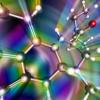
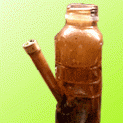
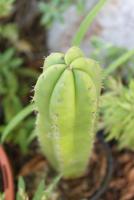
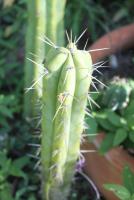
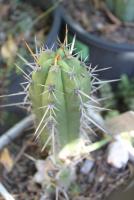
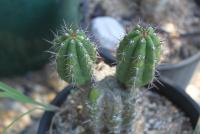
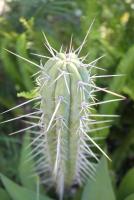
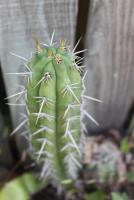

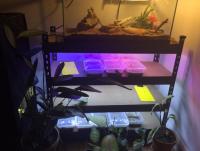

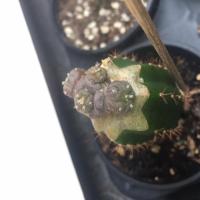
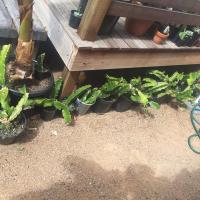

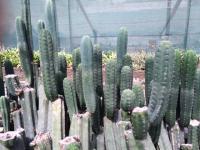
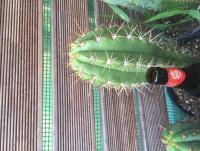
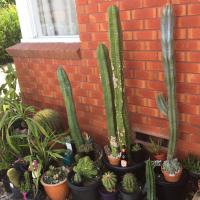
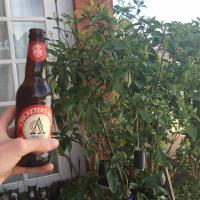
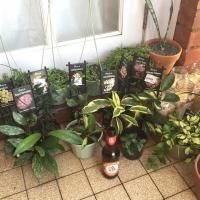
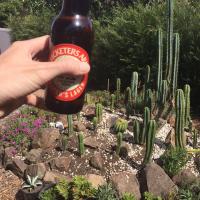
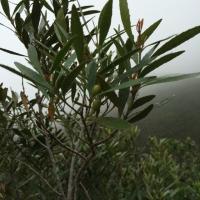
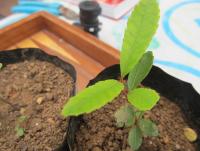
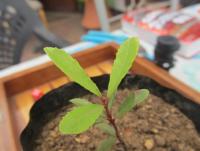
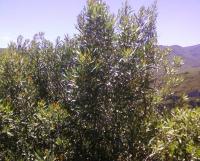
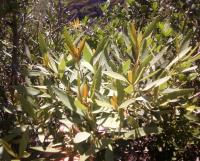
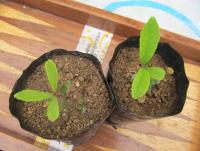
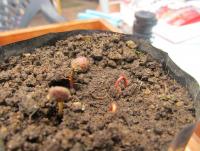






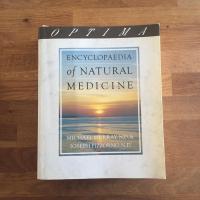






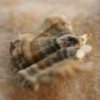














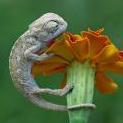



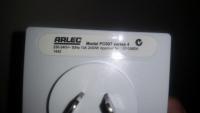


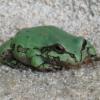
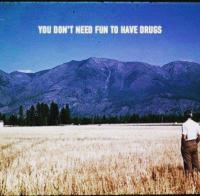


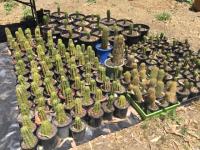
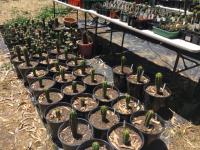
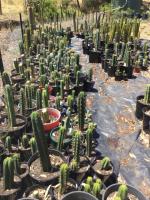
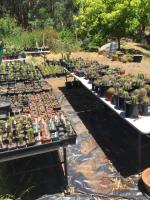
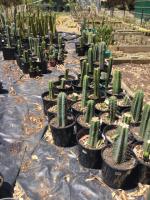
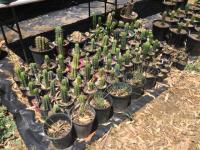
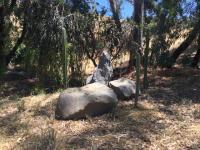
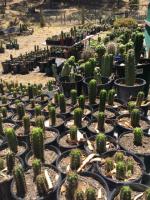
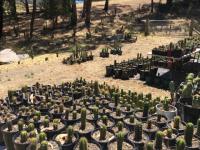
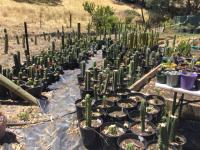

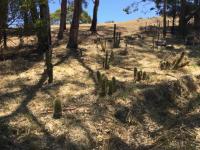
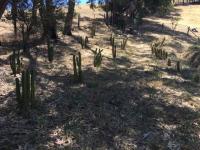
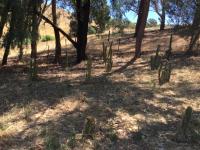
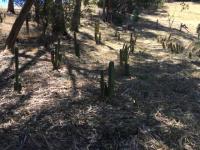
.thumb.jpg.8fa33f13f701393629b9e93bbfa3f020.jpg)